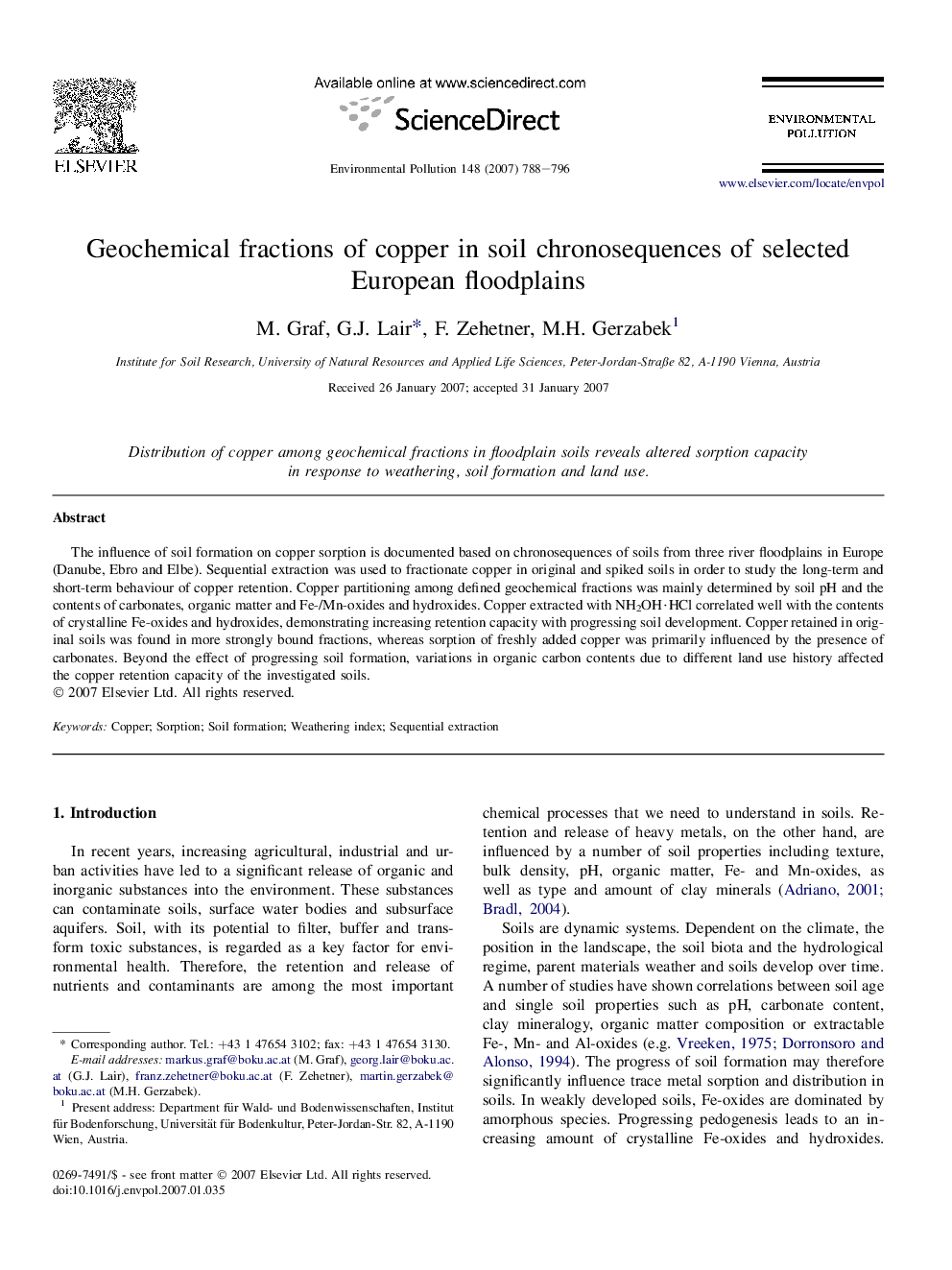| Article ID | Journal | Published Year | Pages | File Type |
|---|---|---|---|---|
| 4427177 | Environmental Pollution | 2007 | 9 Pages |
The influence of soil formation on copper sorption is documented based on chronosequences of soils from three river floodplains in Europe (Danube, Ebro and Elbe). Sequential extraction was used to fractionate copper in original and spiked soils in order to study the long-term and short-term behaviour of copper retention. Copper partitioning among defined geochemical fractions was mainly determined by soil pH and the contents of carbonates, organic matter and Fe-/Mn-oxides and hydroxides. Copper extracted with NH2OH·HCl correlated well with the contents of crystalline Fe-oxides and hydroxides, demonstrating increasing retention capacity with progressing soil development. Copper retained in original soils was found in more strongly bound fractions, whereas sorption of freshly added copper was primarily influenced by the presence of carbonates. Beyond the effect of progressing soil formation, variations in organic carbon contents due to different land use history affected the copper retention capacity of the investigated soils.
